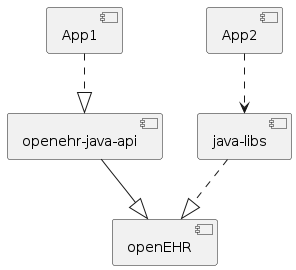Hello,
Could you please give feedback on whether the following idea would be allowed usage of the openEHR intellectual property?
TL;DR: Translate the openEHR specifications into Java API components.
- Create a new GitHub organization called e.g. “openehr-java-api”, with a notice that it is an experimental, unofficial project.
- For each openEHR specification:
- Create a GitHub public repository.
- Inside the repository, create a new Java project.
- In the Java project, create packages, abstract classes, enums, and interfaces, according to the contents of the specification. Those classes etc. should not have any constructors or method bodies, they should just translate the specification into the Java programming language. If allowed, the Javadocs should also contain a copy of the original description of the class, attributes, methods, etc.
- While in the experimental stage, publish the project as Maven Package on GitHub Packages, with the version number of the original specification and a suffix that indicates the compliance status, e.g.
com.experimental-software:openehr-rm-support:1.1.0-alpha-42.
- The API projects are connected with Maven package dependencies, according to the dependencies in the specifications.
- The custom software can apply the required API projects as dependency and create its custom implementation.
Motivation
- Implementers might want to use the published packages as the baseline for their application.
- The maintenance of API-only packages should be doable with reasonable effort, so the packages might cover 99% of the specification and can be close to bug-free.
References
- Intellectual Property | openehr.org
- openEHR/java-libs | github.com
- UML Diagrams | specifications.openehr.org
- Development Baseline | specifications.openehr.org
- GitHub - openEHR/archie: OpenEHR library implementing ADL 2, AOM 2, BMM, RM 1.0.4 and many tools
- openEHR API implementation in Rust | discourse.openehr.org
- JavaScript SDK for openEHR | discourse.openehr.org
- GitHub - ehrbase/openEHR_SDK: A SDK to facilitate the development of openEHR applications)
- Software Development Kit for app development | discourse.openehr.org
